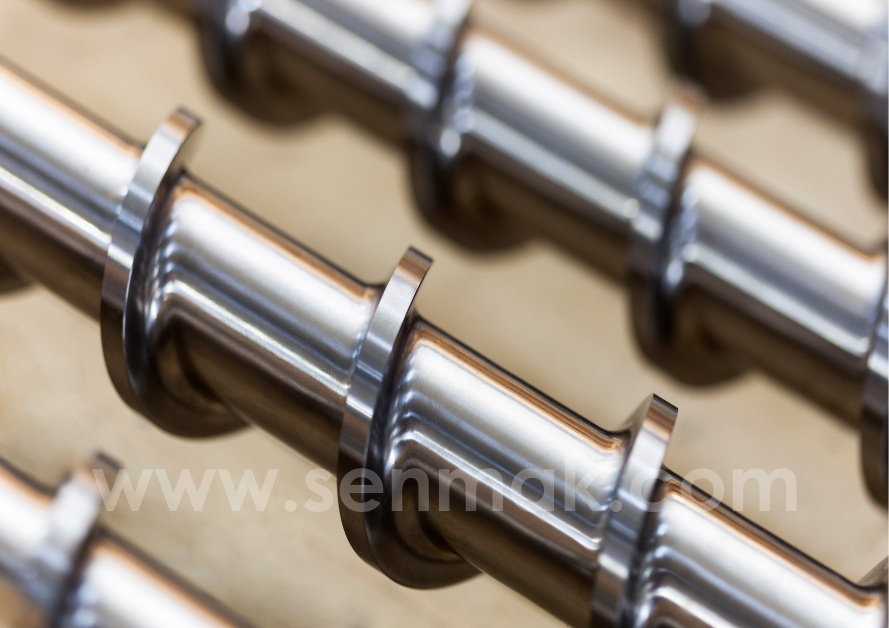Wear Control on Screws and Barrels
- senmakadvert
- Jul 12, 2021
- 2 min read
The wear area of the barrel is the inside diameter at which it is in contact with the screw.

In extrusion systems, the inner diameter of the Barrel should be checked with the help of a hole comparator by measuring the value from both sides, if possible, from both sides, if not, from the die side and the reducer side.
In addition, scratches and injuries inside the sleeve and outside the measurement limits of the compressor should be visually detected and reported.
The following checks should also be made on the barrel;
It should be checked whether there are any cracks or breaks in any part of the barrel.
The welds in the flange connections should be checked for cracks.
It should be checked whether the flange connection surfaces and the surfaces on the invoices are broken.
If there are feeding grooves in the barrel, it must be checked whether these grooves are worn or not.
It should be checked whether the thermocouple socket threads are broken or not.
Check whether the cooling system is clogged.
The barrel linearity should be checked.
Contact wear on screws can occur at the top of the pitch in contact with the barrel and at the bottom of the pitch if a raw material with a high corrosive or abrasive wear is used.
Screw pitch tops should be measured and reported in many shades with the help of a micrometer as shown in the schematic picture. The design and length of the screw affect how many areas will be measured for the measurement of screw wear. In standard screws, measurements must be taken from at least two points in each of the feeding, compression and dosing zones.
In Barrier va maillefer screws, on the other hand, measurements should be taken from at least two points at the entrance area, the beginning of the barrier, the middle of the barrier, the barrier exit and each of the dosing areas. The wear in the dispersive mixers on the screw should be reported by taking measurements from two points.
The following areas of the screw should also be checked;
The screw shaft should be checked for any wear, broken cracks or abrasions.
It should be checked whether there are roughness, holes, scrapes or similar problems at the screw pitch bottoms.
If there is a cooling hole in the screw, it should be checked whether the cooling hole is clogged and whether there is any problem in the connection points. If there is water leakage etc., gasket, o-ring etc. should be replaced.
It should be checked whether there is any winding in the bearing area of the screw.
The straightness of the screw must be checked.















































Comments